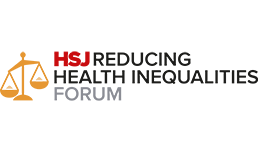A recent survey and online panel discussion held by HSJ in conjunction with CQI revealed the uncertainties leaders are facing over quality, says Jennifer Taylor.
The ambition to make quality the central organising principle of the NHS is well known. It is also the first tenet of the quality, innovation, productivity and prevention drive. But as the NHS goes through the transition period of implementing the government’s reforms, how will this commitment come out in the wash? Will it emerge as a pale version of what it once was?
To glean some answers to these questions the Chartered Quality Institute, in collaboration with HSJ, commissioned an online survey of NHS staff to understand how quality is being seen on the ground within the service
This was followed by interviews with quality leads across all types of NHS organisations. The findings were used to inform a webinar discussion chaired by HSJ editor Alastair McLellan.
The webinar discussion took place between: Alastair McLellan (chair), editor, HSJ; Dr Gillian Leng, deputy chief executive and director of evidence and practice, National Institute for Health and Clinical Excellence; Tim O’Hanlon, fellow, Chartered Quality Institute; associate partner, Atos Origin; and David Stout, director, PCT Network; deputy chief executive, NHS Confederation.
The survey revealed a policy mismatch between government rhetoric and the reality in the NHS. Most respondents said the Health Bill has failed to reflect any aspect of quality.
Gillian Leng told the panel quality was a vital part of the reforms but there was a risk that “people’s eyes might go off the quality ball” during implementation, because they’re focused on organisational structures”.
Structural change is moving apace and even the reformed reforms stipulate a fierce timetable. Is the work on quality falling behind?
“We are moving through a structural reform without the underpinning detail yet being clear,” said David Stout. The debate around the quality premium is one example. New commissioning organisations are being established that will be held to account for financial performance and clinical outcomes, yet it is unclear how that will work in practice.
“There’s a risk we focus so much on the structural side that we ignore the more important detail of how we operationalise these things,” he said.
He also pointed out the real quality challenge lies in “how we maintain quality and reduce price at the same time”.
Most survey respondents cited financial outcomes and operational effectiveness as the elements of quality taking precedence in QIPP. However, the majority gave a negative or neutral assessment of QIPP’s impact in driving quality improvements.
Any transition process requires a balance between quality, cost and timescale, said Tim O’Hanlon. But, he added, people at operational level say “that balance is not right, the timescale is too short”. The largest barrier to quality identified in the survey was the lack of time among influential people to drive a successful quality improvement programme.
NICE has been assessing QIPP case studies and publishing them on NHS Evidence. Around 100 have been approved so far. Feedback revealed people wanted the institute to prioritise examples that improved quality and would save money, ideally short term.
But Dr Leng said there was a worrying disconnect between such sentiments and practice.
“It does feel as if a lot of the savings are being made through the traditional means of ‘cutting this and stopping that’ without taking note of good examples of where you can save money and improve quality,” she argued.
She believes the NICE quality standards will play an important part in driving quality in the new system. Working to a remit from the National Quality Board and, in time, the NHS Commissioning Board, NICE is defining 150 quality standards in health and social care. Each will include 10-15 statements of the most important elements of high quality care, drawing on NICE guidance. The standards will be measurable so organisations can compare their performance with others in the health system.
Dr Leng said: “They will be important for commissioners and providers and making sure they have traction in the system is going to be key as the new service develops.”
Quality standards will drive the quality and outcomes framework, CQUIN (commissioning for quality and innovation payments), and the best practice tariff.
Quality in the NHS - CQI survey findings
- The Health Bill fails to reflect the importance of delivering quality in the NHS
- Financial outcomes and operational effectiveness are the elements of quality taking precedence in the QIPP agenda
- Providers have the biggest impact on quality in the NHS
- Patients are best placed to define quality
- The facets of quality (clinical quality, patient experience, operational effectiveness, financial management) are prioritised differently by managers and other staff groups
- The largest barrier to quality is the lack of time among influential people to drive a successful quality improvement programme
- Quality is not normally included in staff appraisals
- More than a third of managers do not receive quality training
Defining features
The survey revealed varied interpretations of what is meant by quality, depending on the respondent’s job. For clinicians, quality is about patient experience, clinical outcomes and safety. For managers, operational effectiveness was the most important aspect as well as reducing financial waste in the organisation.
“An overarching national quality framework which would help clearly define the facets of quality would be most welcome,” Mr O’Hanlon told the panel. “I think the focus on reducing waste rather than reducing costs might be something that people can more identify with here.”
Patients waiting, unnecessary movement around hospitals and storing excess inventory are all examples of where costs could be reduced. Members of the CQI are trained to understand what is driving the failure costs in an organisation and how to attack the problem.
Mr O’Hanlon described the prevention part of QIPP as reducing waste in organisations rather than reacting to it. He says: “I think the psyche of the quality professional, ‘focus on prevention and as a result of that you stop things going wrong in the first place’, is a much better cost saving mantra than trying to put it right afterwards.”
Dr Leng pointed out the definitions of quality she has come across all relate to continuous improvement.
“It’s not about a fixed state; you need to have an organisation that’s constantly wanting to improve,” she said.
That’s where NICE steps in to constantly review what “best” is.
But defining “best” and getting it into practice has always been a challenge for the institute and the survey highlighted barriers to implementation which struck a chord. Lack of time was the biggest barrier to implementing quality. Other hurdles were lack of leadership, organisational commitment and money.
The types of barriers have not changed but they become more acute in a period of financial challenge, said Dr Leng, “and it becomes more and more of a challenge to put best practice into place”.
She added that in these situations it helps when people can see what change will cost.
“That partly gets over this financial barrier because sometimes there’s a perception that ‘what NICE is recommending must cost an awful lot of money’, and often it doesn’t. Often there are savings that offset the costs.”
Mechanisms can be used at a national level to incentivise quality, which is where the quality standards come in. Incentives are also being put in place through the quality and outcomes framework, the commissioning outcomes framework and the tariff. It will be important to clarify how they fit in the new health system.
Ultimately, quality is a local responsibility, said Mr Stout. But clarity is needed on where the responsibility for quality of services in the NHS lies.
“Firstly it lies with the individual professional providing face to face care with the patient,” the PCT Network director told the panel. “Then it lies with the provider organisation’s board, who is responsible for the delivery of those services, and only after those two do commissioners and regulators come in.”
The majority of CQI survey respondents said providers were the organisations with most impact on quality in the NHS.
“In the subsequent interviews there was a fundamental belief that as providers are the front line and are delivering it, they are the face of quality,” explained Mr O’Hanlon.
Dr Leng agreed that providers have more influence at the moment, particularly given that commissioners are in a state of transition from primary care trusts to clinical commissioning groups. But she argued that commissioners could probably do more to drive improvement.
“They need to have more information back about the quality of services than they’ve probably got at the moment, and they need to find ways of putting back into the contracts a challenge to the providers to up the game [and] to have financial incentives,” she said.
The commissioning outcomes framework is part of the new proposals and would set indicators for the quality of commissioning performance similar to how the quality and outcomes framework sets indicators for general practice performance.
“Those might be incentivised,” said Dr Leng. “[But] how you define what good commissioning performance is in that context we have yet to determine.”
The regulator’s place
Commissioners and regulators both have a role, said Mr Stout. Commissioners can promote quality improvement through service design and terminate contracts with poor quality providers, but the roles of the regulators are less clear.
“If a commissioner cannot rely on the regulator for authoritative stamping of approval [of a provider] then the commissioner will duplicate some things the regulator does,” he said. That leads to inefficient use of quality resources.
The CQI survey found some NHS providers had embraced quality improvement through using independently assessed quality standards, with some holding a wide array of different accreditations. Respondents in this category demonstrated a more holistic view of quality and demonstrated wider stakeholder engagement in the quality improvement process.
When asked who was best placed to define quality, the survey respondents ranked patients highest. This could explain why the question of quality is so unclear in the NHS. Much patient engagement focuses on traditional surveys or complaints monitoring, neither of which defines a quality service.




























No comments yet